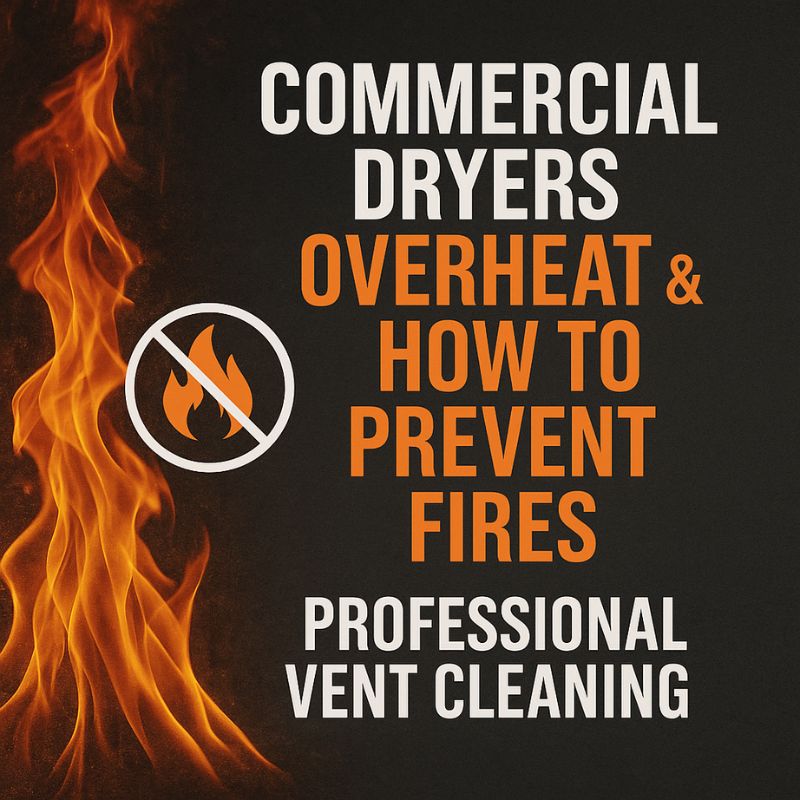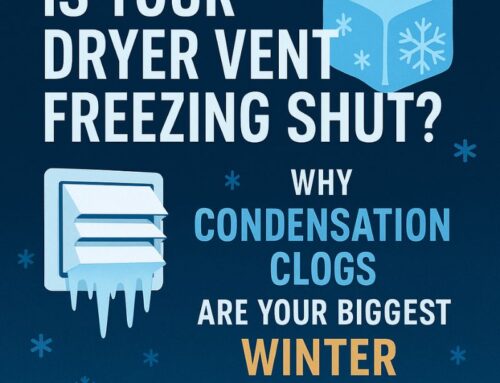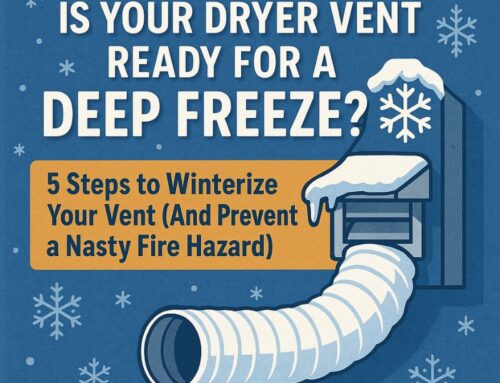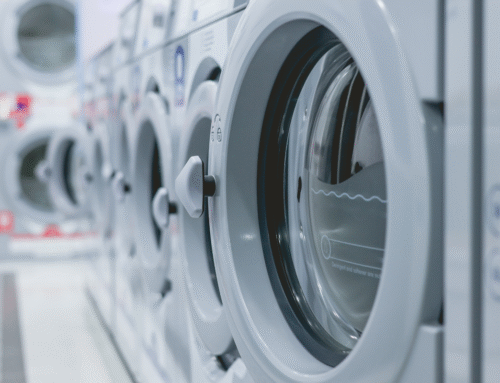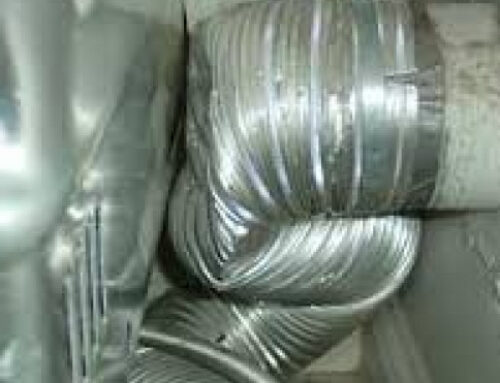The Unseen Threat Lurking in Your Laundry Room
Imagine the bustling laundry room of your hotel. Picture the constant hum of machines at your laundromat. Or consider the critical sanitization process in a healthcare facility.
Now, picture a tiny spark. It’s ignited by something as innocuous as a bit of fuzz. Suddenly, it escalates into a full-blown inferno.
Sounds dramatic? Perhaps. But for businesses relying on commercial dryers, this isn’t a scene from a disaster movie. It’s a very real, often unaddressed, fire risk.
Commercial dryers are the workhorses of your operation. Yet, they are constantly battling a silent, fluffy enemy: lint. This seemingly harmless byproduct of drying clothes accumulates in vents and exhaust systems. It turns your essential equipment into a potential fire hazard.
For laundromats, multi-housing property managers, hotels, commercial cleaning services, and healthcare facilities, this isn’t just about inconvenience. It’s about the safety of your residents, guests, and employees. It’s about the protection of your valuable assets. And it’s about maintaining operational continuity.
Ignoring the problem can lead to costly downtime and irreparable damage. It can even result in severe legal repercussions, especially concerning Colorado fire code violations.
The good news? This fiery fate is entirely preventable.
Proactive commercial dryer vent cleaning isn’t merely a chore. It’s an indispensable fire prevention strategy and a critical safeguard for your business.
In this article, we’ll dive deep into why your dryers might be overheating. We’ll show you how to spot the warning signs. Most importantly, we’ll explain how professional cleaning can prevent disaster before it even starts.
The Silent Killer: Why Commercial Dryers Overheat
So, what exactly happens behind the scenes when your commercial dryer starts acting like a mini-furnace? It all boils down to lint.
Every time a load tumbles, tiny fibers shed from fabrics. These bypass the lint trap and make their way into the dryer’s exhaust system. Over time, these fibers build up, creating a thick, highly flammable blanket inside your vents.
This is the primary reason for clothes dryer overheating and general dryer overheating issues in commercial settings.
This accumulation leads to a dangerous “Chain Reaction of Danger.” First, it causes reduced airflow. Think of your dryer’s vent system as a chimney for hot, moist air. When that chimney gets clogged, the hot air has nowhere to go.
This restriction means your dryer has to work harder and longer to dry clothes. This leads to increased drying time and energy waste. If you’ve noticed clothes still damp after what feels like an eternity, or your energy bills creeping up, a dryer vent is clogged, or even completely dryer vent clogged, could be the culprit.
This constant overwork puts immense component strain on your dryer’s heating elements and motor. They’re designed to operate within specific temperature ranges. When airflow is restricted, heat builds up internally.
This brings us to the most critical point: the ignition point. That combination of trapped, superheated air and highly flammable lint is a recipe for disaster. It’s precisely how to prevent dryer vent fires that we need to understand this mechanism.
When you ask, “Why is my dryer overheating?” or “Why is my dryer overheating and shutting off?”, lint buildup is almost always the prime suspect. It’s a clear sign that your machine is struggling to breathe.
We’ve heard stories, like the hotel manager who almost lost their entire laundry facility. A neglected dryer vent turned a routine laundry day into a terrifying emergency. It’s not just about the machine. It’s about the entire operation, the safety of everyone on site, and the potential for losing everything you’ve worked for.
Is Your Business Playing with Fire? Signs of an Overheating Dryer
Your commercial dryers might be trying to tell you something. Even if they can’t speak. Learning to recognize the early warning signals of an overheating dryer can literally be a lifesaver for your business.
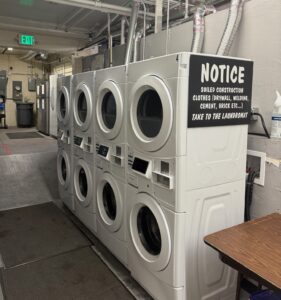
Step Denver Commercial Installation – Machines Right
Here are the tell-tale signs that your dryer is getting too hot for its own good:
- Excessive Heat: This is the most obvious sign. If the top of your dryer feels unusually hot to the touch, or if the laundry room itself feels significantly warmer than usual, your dryer is likely struggling to vent heat. You might wonder, “How do I know if my dryer is overheating?” or “Can a dryer get overheated?” The answer to the latter is a resounding yes. The former is often answered by simply touching the machine or noticing the ambient room temperature.
- Unusual Odors: A burning smell, a musty odor, or even a faint “hot” smell can indicate lint scorching inside the vent. It could also mean excessive heat stressing electrical components. Trust your nose!
- Longer Drying Cycles: Are clothes still damp after a full cycle? This is a classic symptom. If you’re running multiple cycles to get a single load dry, it’s a huge red flag. This also answers the question, “Can a clogged dryer vent cause clothes to not dry?” Absolutely, it’s one of the most common indicators.
- Frequent Shut-offs: If your dryer constantly stops mid-cycle, especially if it feels hot, it’s likely its internal thermostat is engaging a safety shut-off to prevent a fire. This is precisely why your dryer is overheating and shutting off. It’s a built-in safety mechanism screaming for attention.
- Visible Lint Accumulation: While lint in the trap is normal, excessive lint around the dryer, on the floor, or visibly clogging the exterior vent opening is a clear sign of a deeper issue.
- Reduced Airflow from Exterior Vent: Go outside and check the exterior dryer vent while a machine is running. Is the airflow weak or non-existent? This is how to tell if dryer vent is clogged. Strong, hot, moist air should be expelled freely.
If you notice any of these signs, the actionable advice is simple: immediately shut off the dryer. Do not operate it again until it has been professionally inspected and cleaned. Don’t play hero; play it safe.
The Solution: Professional Commercial Dryer Vent Cleaning
You wouldn’t try to perform open-heart surgery on yourself, right? Similarly, when it comes to commercial dryer vents, DIY solutions simply won’t cut it.
Why Professional Cleaning is Non-Negotiable: While you should always clean your dryer’s lint trap after every load, that’s just the tip of the iceberg for commercial systems. Standard lint trap cleaning doesn’t address the deep-seated lint that accumulates in the long, complex ductwork of commercial dryers.
Professional commercial dryer vent cleaning services utilize specialized equipment. These include powerful vacuums, rotating brushes, and air whips. They can reach deep into the entire vent system, dislodging and removing even the most stubborn lint buildup. They have the expertise to navigate complex ductwork, often involving multiple turns and long runs, ensuring a thorough clean.
Frequency Matters: So, how often should commercial dryer vents be cleaned? There’s no one-size-fits-all answer. It depends heavily on usage. For high-volume operations like laundromats and large hotels, annual or even semi-annual cleaning might be necessary. For smaller facilities or those with less frequent use, every 12-18 months could suffice. A professional assessment can help determine the ideal schedule for your specific needs.
Finding the Right Partner: When searching for “commercial dryer vent cleaning near me” or researching “commercial dryer vent cleaning companies,” look for providers with proven experience in commercial settings. Ensure they are insured, have certified technicians, and demonstrate a clear understanding of the unique challenges of commercial dryer systems. Ask for references and read reviews.
The cleaning process itself is typically quick and efficient. It causes minimal disruption to your operations. Technicians will access the entire vent system, from the dryer connection to the exterior exhaust. They ensure every speck of lint is removed. This thorough process is precisely how you clean dryer vent to prevent fires effectively. It’s the cornerstone of dryer vent cleaning and fire prevention.
Beyond the Vent: Comprehensive Fire Prevention Strategies
While professional vent cleaning is paramount, a truly safe laundry environment requires a holistic approach.

- Regular Maintenance Schedule: Implement a comprehensive maintenance schedule. This includes not just vent cleaning, but also routine checks of dryer components, electrical connections, and gas lines (if applicable).
- Employee Training: Empower your staff! Ensure all employees who operate or interact with the dryers are trained on the importance of cleaning lint traps after every load. They should also recognize the signs of an overheating dryer and know who to report issues to immediately. A well-informed team is your first line of defense.
- Proper Dryer Usage: Educate staff on avoiding overloading dryers. This can restrict airflow and increase drying times. Also, be mindful of drying certain materials, like rubber-backed rugs or items with flammable chemicals, which can pose additional risks.
- Fire Suppression Systems: While hopefully never needed, ensure your laundry facility is equipped with appropriate fire suppression systems (like sprinklers). Also, have easily accessible, properly maintained fire extinguishers.
- Colorado Fire Code Compliance: For businesses in Colorado, unaddressed lint buildup and overheating dryers aren’t just a fire hazard. They’re a direct path to fire code violations. Regular, documented professional cleaning demonstrates due diligence. It helps your business meet safety standards, avoiding hefty fines and potential shutdowns. Think of it as an investment in compliance and peace of mind. This proactive approach can also positively impact your insurance premiums and overall property value, making your business more appealing to insurers and potential buyers alike.
Protect Your Investment, Ensure Safety
The hum of your commercial dryers should be a sound of productivity. Not a ticking time bomb. Overheating dryers, fueled by insidious lint buildup, pose a significant and often underestimated fire risk to laundromats, multi-housing units, hotels, and healthcare facilities.
By understanding the dangers, recognizing the warning signs, and committing to professional commercial dryer vent cleaning services, you’re not just performing maintenance. You’re actively engaging in dryer vent cleaning and fire prevention.
You’re safeguarding your peace of mind. You’re saving on energy costs and costly repairs. Most importantly, you’re ensuring the enhanced safety of everyone who steps foot in your facility.
Don’t let lint turn into a liability. Take proactive steps today to assess your current dryer situation. Contact a reputable commercial dryer vent cleaning company for a comprehensive inspection and cleaning. Protect your business, your assets, and the people you serve. Your future (and your building) will thank you!

